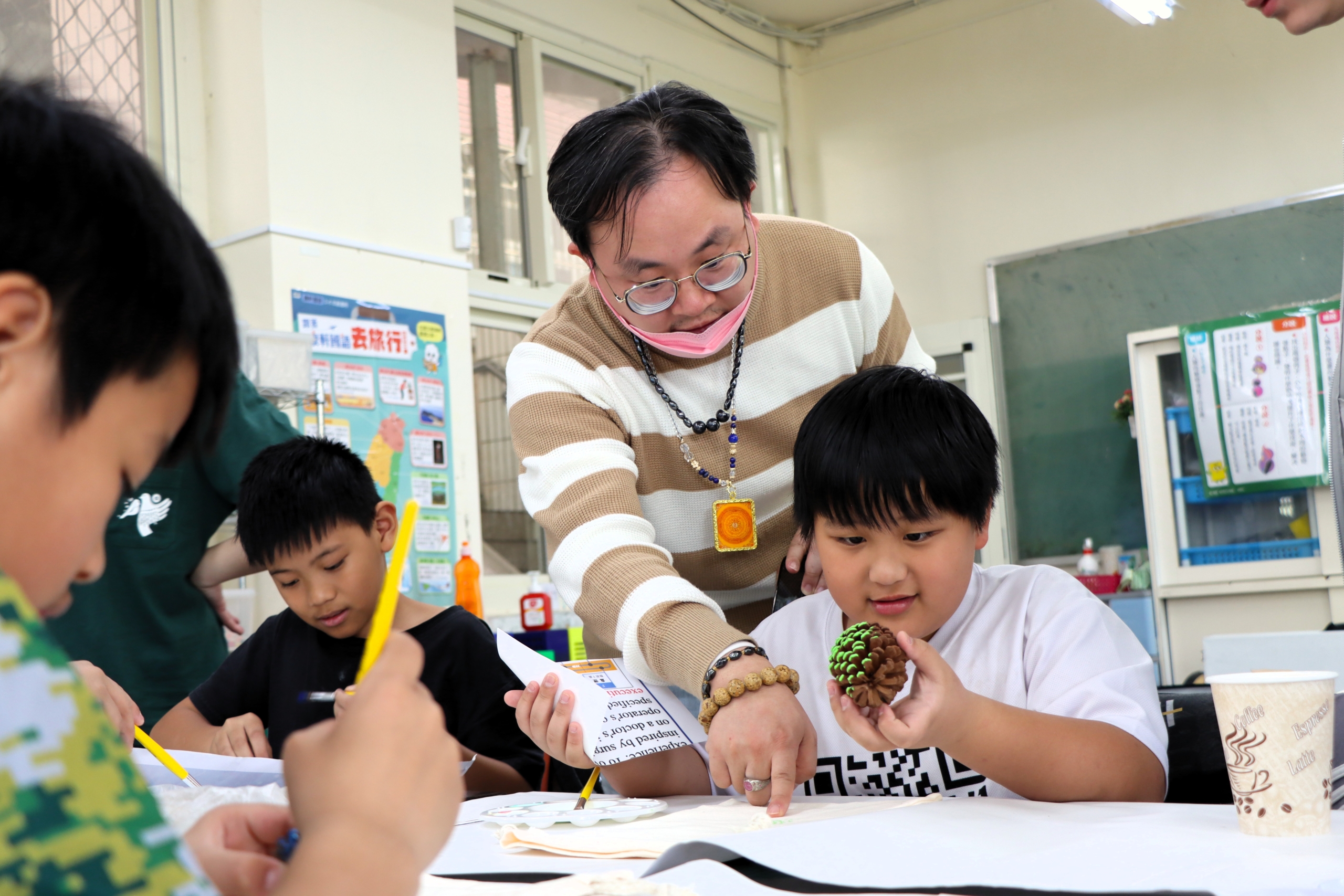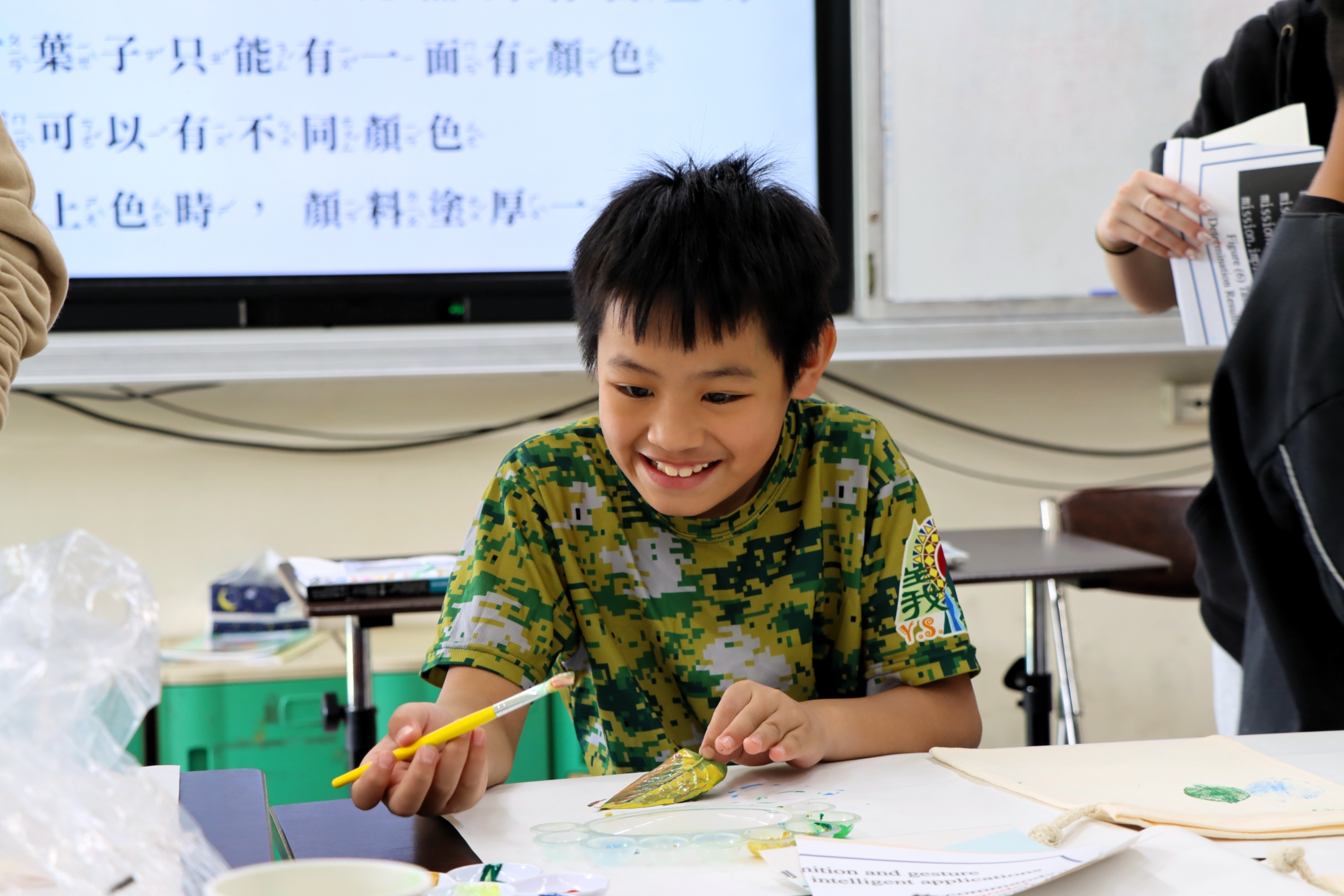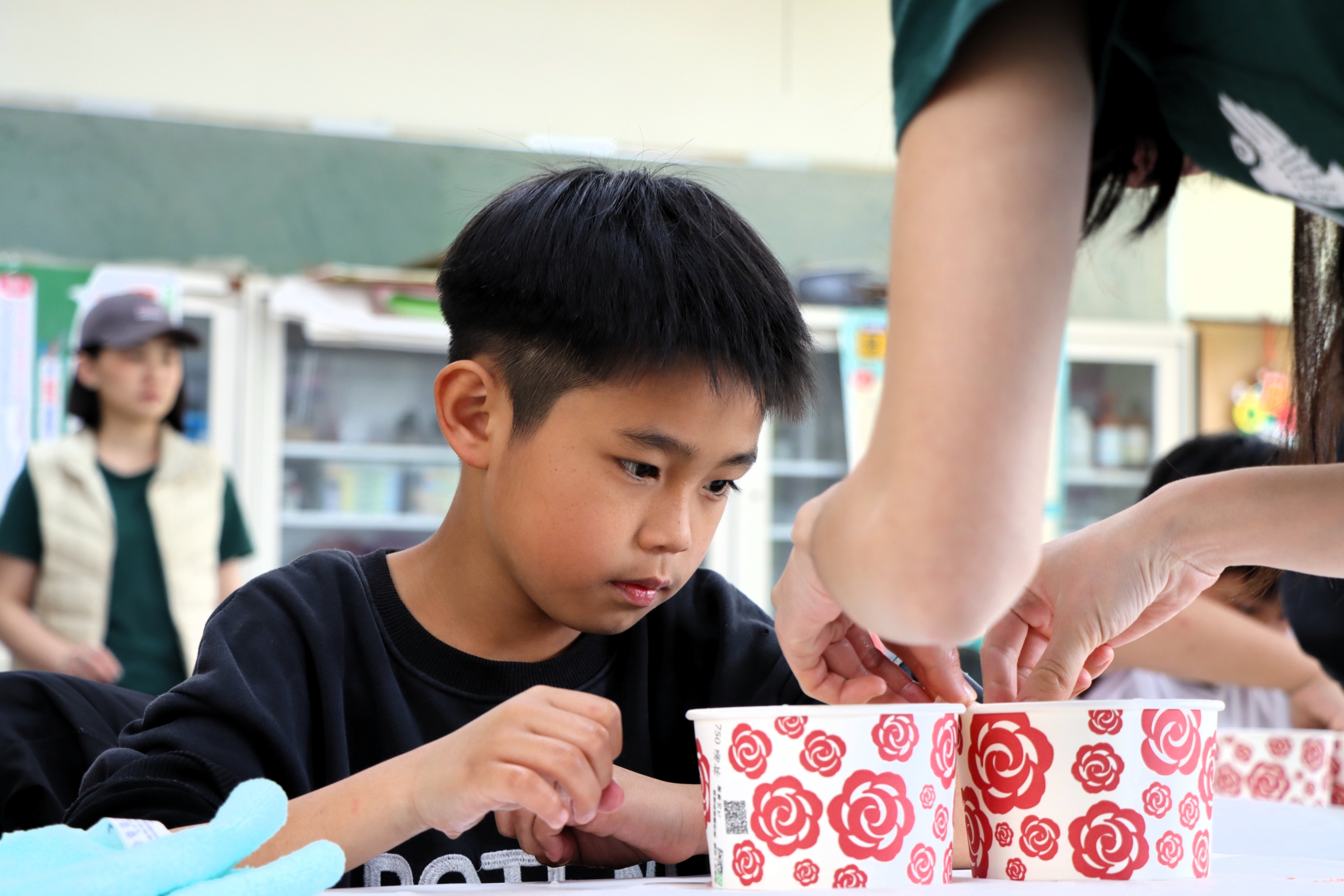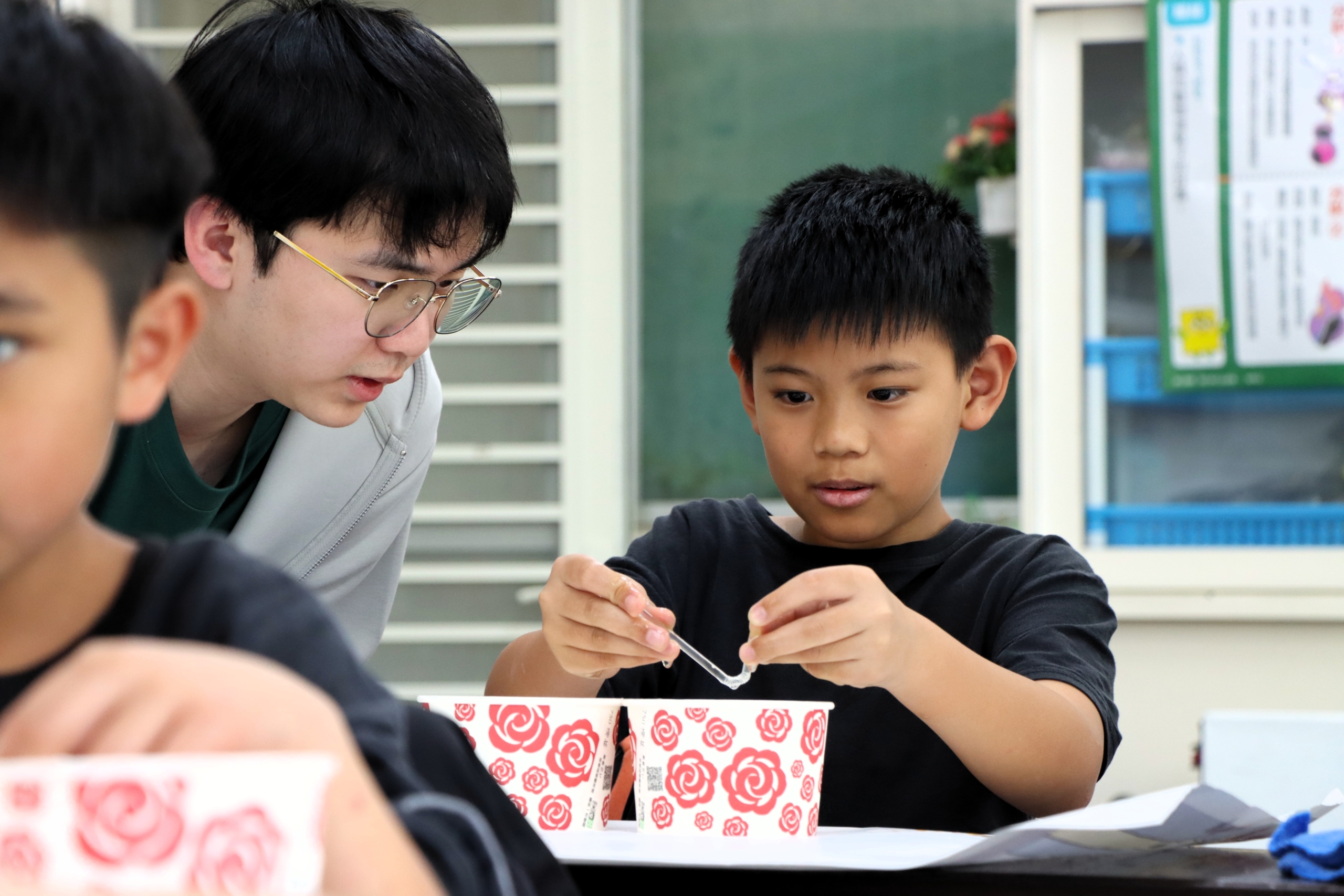This marks my third year living in Taoyuan. The places the bus once took me now exist as scattered fragments in my memory, with the relative positions of different districts having long blurred together. As the days count down, fate seems to be subtly drawing me closer to this city.
This time, the Zhongda mbhoyaw Fuxing USR project led me to Fuxing District. We boarded a nine-seater van, departing from National Central University, merging onto the highway, winding through mountain roads, and entering a stretch flanked by dense bamboo forests. The driver rolled down the window and cheerfully said, “We are from National Central University.” Under the scorching sun, the iron gate slowly opened, and the vehicle continued forward until we arrived at the parking area of Yisheng Elementary School. After an hour-long journey, we once again set foot on this land.
The theme of this activity was the “Environmental Education Classroom Program,” designed for six fourth-grade students at Yisheng Elementary School. The instructors were graduate students from the Department of Environmental Engineering at National Central University. The two-hour lesson revolved around the element of “water” and was divided into two sections.
The class began with the fundamental principle that water flows downward, followed by the question, “What materials have water absorption properties?” to encourage students to think critically. The instructor utilized videos to illustrate how “capillary action allows water to move differently through gaps of varying sizes.” After the theoretical explanation, the lesson transitioned into a hands-on activity—customizing canvas tote bags.
With guidance from their older mentors, the children applied paint to various plants, arranging colorful patterns. They carefully imprinted the textures of leaves and pinecones onto the canvas, creating unique designs. One particularly adventurous boy set aside all materials, painted his palm directly, and left an unreplicable mark on his tote bag with a decisive press.
The second session focused on the “siphon effect.” The instructor introduced the concept through the aquaponics system at Shengyi Elementary School, gradually guiding the students to understand its principles. To provide a clearer visualization of the “siphon effect,” the instructor demonstrated it at the front of the classroom using transparent containers. The children gathered around, watching intently as the water moved. The instructor repeatedly emphasized, “The tube must be filled with water, and the outlet must be lower than the water surface.”
Once the students grasped the basic concept, they conducted their own experiments to verify it. To enhance visibility, the instructor added different colored dyes to two containers. As the water from the initial container flowed into the lower container, the colors blended instantly, making the siphon effect clearly observable.
After the experiment, the instructor reinforced the key points: “For the siphon effect to work, the tube must be completely filled with water, free of air bubbles, and the outlet must be positioned lower than the water surface. Otherwise, the water will not flow.”
On one side of the staircase, a learning sheet read, “Everyone’s feelings matter.” Outside the classroom, the children’s New Year’s resolutions for 2025 were posted, with a mix of phonetic symbols and Chinese characters forming the sentence, “I can improve my temper.” The corridor echoed with singing and piano music, beneath our feet was a blue playground, and beyond lay a winding asphalt road disappearing into the greenery. They shared their favorite songs and stories about their fathers; they seized the fleeting ten-minute recess, dashing out of the classroom like the wind, rolling down the slope under the glaring sun.
Everything felt fleeting and swift, like a series of images flashing past in the scorching afternoon of March. Just moments ago, our footsteps traced formulas on the white paper at Central University, and in the next instant, we found ourselves embraced by the mountains at Shengyi Elementary School—only to prepare for departure once again.
On the way back, we passed through Baiji Tunnel and Kanjin Bridge, returning to the less-crowded back entrance of National Central University just after four in the afternoon.
Text by Zhu, Ting-Yu
Edited by Li, Ruo-Jia
Photos by Zhu, Ting-Yu






